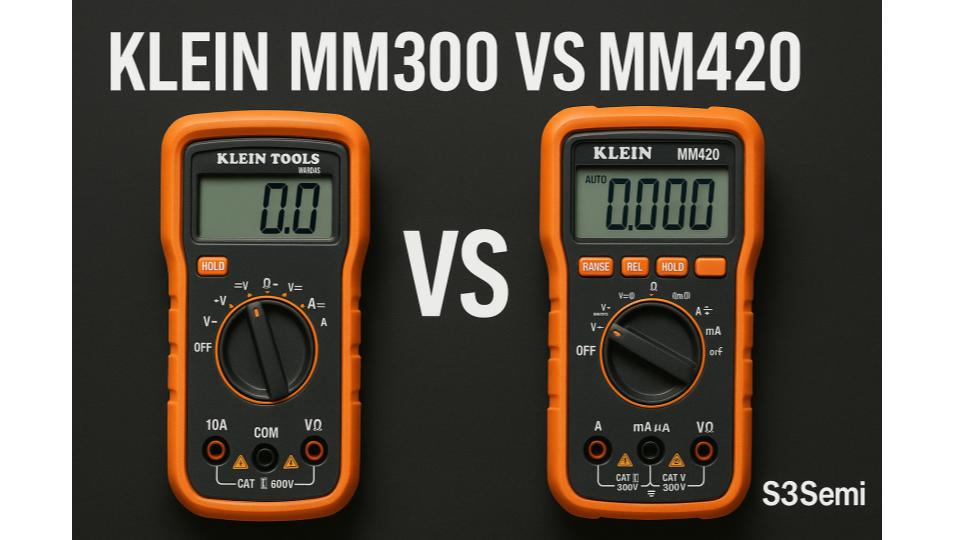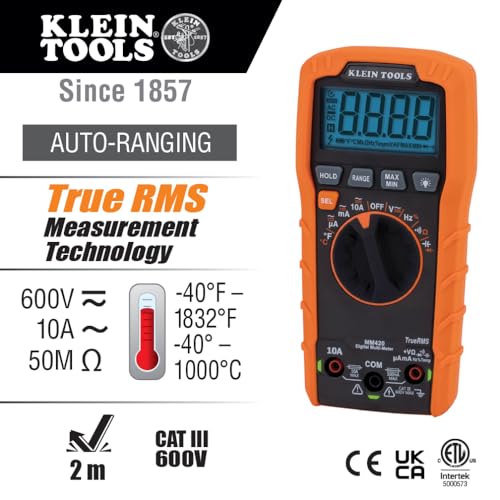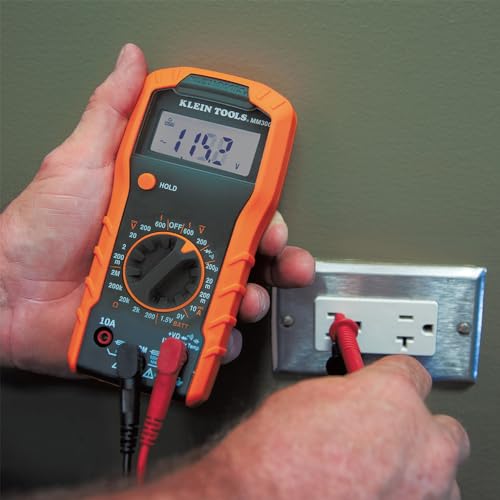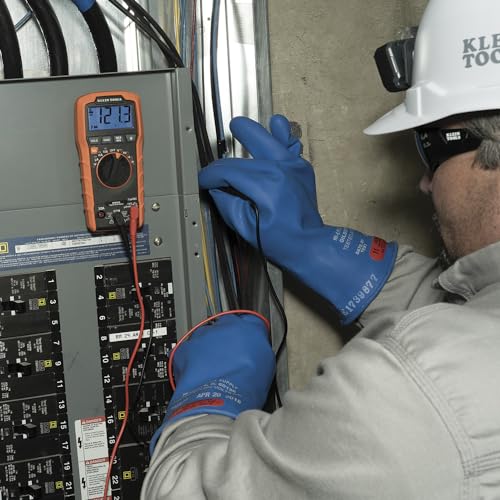Klein Tools offers a line of multimeters and testers for electricians, technicians, and maintenance professionals. Among their product line, the MM300 and MM420 are commonly compared because they offer overlapping features but differ in capabilities and target use.
🏷️ Klein Multimeter Deals ⭐⭐⭐⭐
Below, you’ll find a breakdown of their specs, strengths and weaknesses, and guidance on which model fits your needs best.
Overview & Target Use
Klein MM300 is positioned as a versatile, general-purpose multimeter/tester with functionality suitable for electrical work, troubleshooting, and field use.
Klein MM420 is a more advanced model with expanded measurement capabilities and possibly more rugged build, aimed at more demanding field tasks and broader ranges.
Users often ask which one gives more value for common trade and maintenance work: simple systems, HVAC, residential wiring, etc.
Specification Comparison Table
| Feature | Klein MM300 | Klein MM420 |
|---|---|---|
| Measurement types | AC voltage, DC voltage, resistance, continuity, capacitance, diode, frequency | Same as MM300 plus expanded ranges and possibly extra features like temperature, higher current ranges |
| Voltage range | Up to ~600 V AC/DC (depending on variant) | Likely up to ~1000 V AC/DC (depending on variant) |
| Current range | Often up to 10 A (with fused protection) | Possibly higher or better range / fuse protection |
| Accuracy / resolution | Standard professional-grade accuracy (e.g. ±1.0% on certain ranges) | Better accuracy or more refined resolution on tighter ranges |
| Display & features | LCD display, backlight (maybe), data hold / min-max modes | Backlit display, possibly graphical or extra display enhancements (bar graph) |
| Safety rating | CAT III / CAT IV levels depending on model | Higher safety rating, better insulation and overvoltage protection |
| Build & ruggedness | Solid build, rubberized case, shock resistance | More rugged, possibly water/dust-resistant or tougher casing |
| Additional features | Basic extras like relative mode, hold, auto-ranging | Additional features such as temperature measurement, higher capacitance ranges, better input filtering |
| 💳 Pricing | 💲 Check Price | 💲 Check Price |
The actual published specs for your exact model numbers may vary (e.g. Klein may have specific “MM300D”, “MM3000” vs “MM420D”, etc.), so always check the datasheet for your actual unit.
✅ Pros & Cons
Klein MM300
Pros
- Very good value for general troubleshooting and electrician tasks
- Lightweight and sufficiently capable for most residential / light commercial work
- Likely easier to carry, simpler UI
- Lower cost means less financial risk for damage or loss
Cons
- Might lack precision or extra features needed in more advanced diagnostics
- Limited range or safety headroom compared to higher-end models
- May lack extra measurement capabilities (e.g. temperature)
Klein MM420
Pros
- Expanded measurement ranges and better accuracy in tighter ranges
- More rugged build and higher safety margins
- More features (e.g. temperature, enhanced ranges) make it more future-proof
- Better suited for heavier-duty or professional troubleshooting
Cons
- Higher cost — you pay for “more than you often need” in many jobs
- Likely heavier or bulkier due to enhanced build
- More complex UI or features to learn (which might be overkill for simple tasks)
Use-Case Recommendations
Residential / general electrician work: The MM300 is probably enough. You’ll use basic voltage, continuity, and resistance measurements most often.
Commercial / industrial / HVAC / advanced diagnostics: The MM420 gives you headroom for extra ranges, features, and better durability on the job.
Field use / rugged environments: Go for MM420 for better protection, insulation, and longevity in harsher settings.
Students / entry-level users: The MM300 is more budget-friendly and sufficient to learn the trade.






